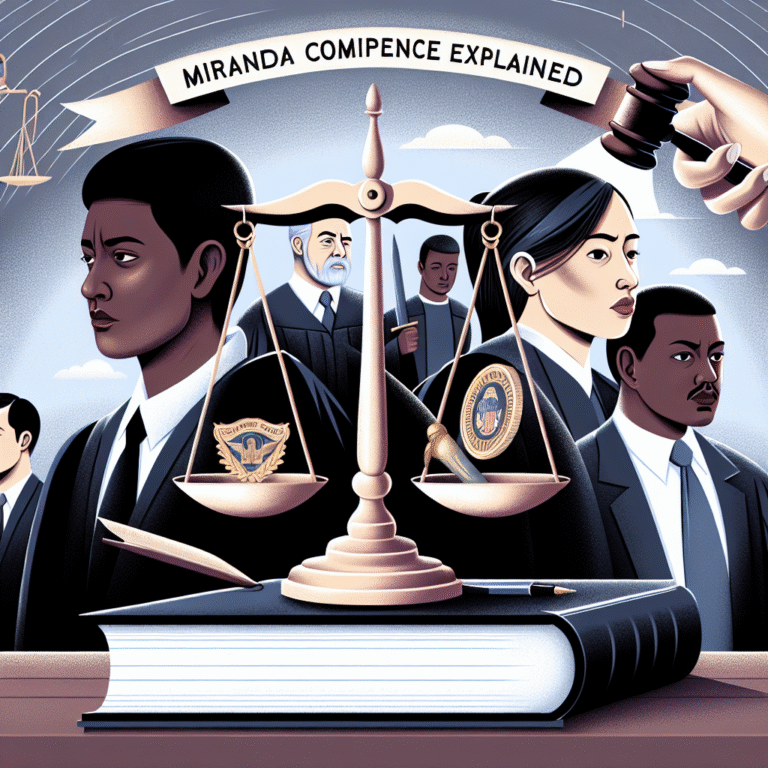
Introduction
In an age where technology evolves at breakneck speed, law enforcement agencies worldwide are racing to adopt innovative interrogation techniques that leverage these advancements. The traditional methods of interrogation, often reliant on psychological manipulation and emotional appeals, are being enhanced and, at times, replaced by cutting-edge technology. This transformative approach is not just enhancing the efficiency of interrogations; it is also ensuring justice is served more fairly and accurately.
Imagine a world where advanced software analyzes a suspect’s body language in real-time, or virtual reality environments simulate stress tests to assess truthfulness. This landscape is rapidly becoming a reality, making it vital for those involved in law enforcement — including officers, policymakers, and citizens — to understand how these innovative interrogation techniques are changing the game. Join us as we delve into the multifaceted world of modern interrogation, examining tools and methods that are redefining the investigative process and how technology is shaping the future of law enforcement.
The Science of Interrogation: Traditional vs. Innovative
Historical Context
Historically, interrogation techniques revolved around psychological manipulation, often termed "third-degree tactics." These methods were fraught with risk, not only due to the potential for eliciting false confessions but also the ethical implications associated with coercive practices. Over time, best practices have evolved, inspired by psychological research and advances in neuroscience, leading to more humane and effective approaches.
Transition to Technology-Driven Techniques
With the advent of technological tools — from artificial intelligence (AI) to virtual reality (VR) — innovative interrogation techniques are taking center stage. This transition allows law enforcement to gather evidence more efficiently while simultaneously safeguarding the rights of suspects.
Body Language Analysis and AI
Key Innovation: AI-driven software can analyze micro-expressions, posture, and vocal tones to gauge the reliability of statements made by a suspect.
Case Study: The LA Police Department used software developed by a tech startup to assess interrogations. Initial findings indicated a 30% increase in the accuracy of detecting deception, suggesting that integrating technology can vastly improve outcomes.
Ethical Implications
While these innovations aim to make interrogations more effective and humane, the ethical dimensions cannot be ignored. As technology integrates into these processes, questions around privacy, consent, and even the potential for misuse arise. Law enforcement agencies must tread carefully to ensure that they maintain public trust while reaping the benefits of new techniques.
Key Innovative Interrogation Techniques
1. Voice Stress Analysis (VSA)
Overview: VSA technology examines stress levels in an individual’s voice, providing insights into the truthfulness of their statements.
Application: Various police departments have started employing VSA to complement traditional interrogation techniques. A notable partnership between academia and law enforcement showcases the technology’s success rate, reaching an impressive 85% accuracy.
2. Advanced Interview Training
Overview: This involves training officers to employ techniques based on positive reinforcement and rapport-building rather than coercion.
Case Study: In the UK, a pilot program was launched to teach this method. Results indicated a nearly 50% reduction in false confessions and improved community relations, illustrating the dual benefits of innovative techniques.
3. Virtual Reality (VR) Simulations
Overview: VR allows officers to undergo simulated interrogation environments where they can practice interrogation techniques in real-time scenarios.
Application: A Massachusetts police department used VR simulations to train its officers. Feedback showed improved confidence and skills in real-world interactions.
4. Neuroimaging
Overview: Highly advanced tech enables the observation of brain activity in real-time during interrogations, leading to a deeper understanding of truth-telling versus deception.
Case Study: A research study at Stanford University applied neuroimaging in controlled interrogation experiments with favorable results regarding truth detection, suggesting potent implications for future interrogations.
5. Data Analytics and Big Data
Overview: Law enforcement agencies leverage large datasets to identify patterns that inform questioning strategies effectively.
Application: Data analytics has helped police departments prioritize suspects based on a variety of factors. One particular case led to the successful apprehension of a serial offender by identifying behavioral patterns analyzed via big data.
Tables and Charts
| Technique | Success Rate | Ethical Concerns |
|---|---|---|
| Voice Stress Analysis | 85% | Misuse of data, false positives |
| Advanced Interview Training | 50% reduction | Training consistency |
| Virtual Reality Simulations | Significant | Accessibility and cost of technology |
| Neuroimaging | Favorable results | Privacy issues and consent |
| Data Analytics | Opportunistic | Profiling and discrimination risks |
These innovative interrogation techniques are not simply tweaks to existing practices; they embody a paradigm shift towards more humane and effective methods.
Challenges to Implementation
While the prospects seem promising, agencies face several hurdles in broad-scale adoption. Budget constraints, training requirements, and access to cutting-edge technologies can hinder progress. Furthermore, older officers accustomed to traditional methods might resist change.
Change Management and Training
Success in integrating innovative interrogation techniques hinges on comprehensive training and support from agency leadership. Employees must be made aware of the benefits, potential risks, and how to utilize new tools effectively.
Conclusion
As we conclude this exploration into innovative interrogation techniques, it is clear that technology is reshaping the landscape of law enforcement. By instituting cutting-edge tools and practices, agencies can enhance efficacy, uphold justice, and foster trust within communities.
The challenge remains to embrace these innovations responsibly and ethically. To do so will not only strengthen legal frameworks but will also move society toward a safer and more just future.
FAQs
1. What are the main benefits of innovative interrogation techniques?
Innovative interrogation techniques enhance the accuracy of information gathered, reduce false confessions, and foster stronger community relations by ensuring humane treatment of suspects.
2. How does AI improve interrogation methods?
AI helps detect inconsistencies in a suspect’s statements based on their body language, vocal tones, and micro-expressions, leading to more informed investigative strategies.
3. Are there ethical concerns surrounding new technologies in interrogation?
Yes, ethical concerns include privacy violations, the potential for misuse of data, and the need for strict guidelines to ensure fairness and accountability.
4. How can law enforcement agencies implement these techniques effectively?
To implement effectively, agencies should invest in training officers, allocate sufficient budgets, and involve community stakeholders to ensure transparency and build trust in their practices.
5. What future trends can we expect in interrogation techniques?
Future trends may include further integration of AI, improvements in VR training, and more comprehensive data analytics, all contributing to increasingly refined and accurate interrogation processes.
By continuously embracing and critically analyzing these innovative interrogation techniques, law enforcement can not only improve its effectiveness but also enhance its relationship with the communities they serve, making strides toward a more just and efficient system. The future looks promising; the challenge now lies in implementation and ethical management as technology continues to advance.

















